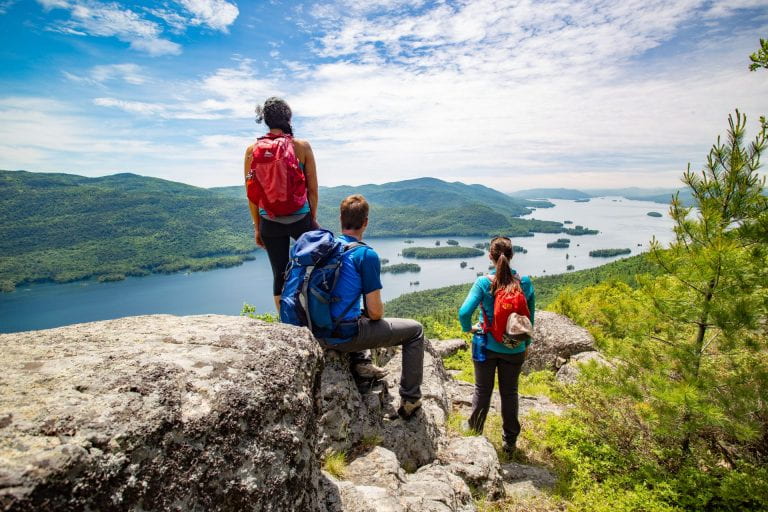Across the world, COVID has been taking a devastating toll on both the tourism industry and Indigenous communities. First Nations groups like the Heiltsuk of British Colombia—along with many Indigenous tribes—are enforcing strict lockdown measures in an attempt to keep their people safe from the virus. A recent BBC story quoted Marilyn Slett, chief councillor of the Heiltsuk Tribal Council: “Our laws and traditions are oral. They’re passed down by our Knowledge Keepers, a group of Elders who have learned the Nation’s customs, traditions and protocols. We only have 30 fluent Hailhzaqvla-speaking Elders left. We’ll uphold Heiltsuk laws and do everything we can to protect them.”
The Heiltsuk are not alone in their determination to do what they can to keep their traditions and people alive. What does COVID mean for tribes who’ve been generating income by hosting visitors?
On April 29th, the Organization of American States and the George Washington University International Institute of Tourism Studies in collaboration with the US Bureau of Indian Affairs held a webinar to discuss the issue. Keith Henry, President and CEO of the Indigenous Tourism Association of Canada; Magi Williams, Public Relations Director for Wind Creek Hospitality; and Alfreida Littleboy, owner of Native Grill Navajo Soul Food shared their insights.
Financially, the impact of COVID-10 on Indigenous communities and tourism in Canada has been devastating. As Henry pointed out, 40,000 jobs and roughly $900 million GDP were lost in March alone. He has been advocating for Indigenous-led financial solutions as many of the stimulus funding options currently offered are not available to Indigenous tourism business owners. In April, the Indigenous Tourism Association of Canada announced that the federal government would be committing $306.8 million dollars in stimulus funding to support the 6000 small-medium Indigenous businesses across the country. Of these, more than 30 percent, or 1875, are Indigenous tourism businesses.
In the US, with the closing of tribal casinos, tribal revenue has been severely impacted—not only for the tribes themselves and the individual members who’ve lost their jobs at the casinos but for the people who own and work for nearby businesses, including restaurants, spas and hotels, which have also been closed. While the US government authorized $8 billion for tribes in March, when the casinos closed, it’s been slow to distribute the money.
Alfreida Littleboy, a member of the Navajo Nation who owns a food truck in Cameron, Arizona, described the challenges her community is facing, particularly due to a lack of infrastructure, access to medical care and the long distances tribal members need to travel to get even basic supplies. Because the Navajo lack running water and electricity, many people including tribal Elders, often live 30 miles from the nearest water sources. And because only 17 grocery stores serve the entire Navajo Nation, tribal members have been coming into contact with sick people on their way to get food and water. According to a recent article on the NPR website, if the Navajo Nation were a state, it would have the highest rate of coronavirus cases per capita after New York. Planeterra, the foundation arm of the travel company G Adventures, in partnership with local business owner Alfreida Littleboy, has been fundraising to provide the Navajo with supplies.
The webinar group agreed that good communications and networking are key to coping with the very difficult situation now and to recovery planning. Magi Williams of Wind Creek Hospitality, which manages casinos and racetracks for Alabama’s Poarch Band of Creek Indians—the only federally recognized Indian tribe in the state of Alabama—described how her office has been proactively keeping in touch with guests through direct outreach and by sharing information on a regularly updated website. The key is to keep guests connected and relationships alive.
The Indigenous Tourism Association of Canada has also been focused on communications and networking, which as Keith Henry stressed are vital to making tourism work as a tool for cultural revitalization and to driving sustainable economic development.
A recording of the webinar and additional resources referenced in the webinar are available here.
If you would like to join us in our support of Alfreida Littleboy’s work with Planeterra Foundation and the local area’s Chapter House to increase access to locally-sourced sanitizers and cleaners, as well as basics such as food, in the Navajo Nation, please click here.
To continue the discussion, please join our Facebook Group.
We look forward to seeing you in June for our next webinar, which will focus on Indigenous tourism in Latin America; stay tuned for details.


